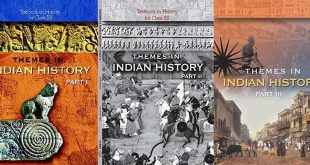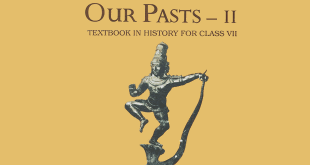Question: What do you know about Surat, of the seventeenth century?
Answer:
- Surat in Gujarat on the west coast of India was one of the most important ports of Indian Ocean trade in the seventeenth century.
- Dutch and English trading ships began using the port from the early seventeenth century.
- Its importance declined in the eighteenth century due to development of Goa, Calcutta, Bombay and Madras, during the colonial rule, as trading ports and city-centres.
Question: Write a short note on the Indian Textiles and the World Market around 1750.
- Around 1750, India was the world’s largest producer of cotton textiles.
- From the 16th century European trading companies began buying Indian textiles for sale in Europe.
Words Tell Us Histories
- Indian textile were famous in western market under different names such as mislim, calico, etc.
- Printing cotton cloths were called chintz, cossaes or khassa and bandanna.
- From the 1680s there started a craze for printed Indian cotton textiles in England and Europe mainly for their exquisite floral designs, fine texture and relative cheapness.
- Other cloths that were Kasimbazar, Patna, Calcutta, Orissa, Charpoore.
Indian Textiles in European Markets
- Wool and silk makers in England began protesting against the import of Indian cotton textiles.
- In 1720, the British government enacted a legislation banning the use of printed cotton textiles – chintz – in England. This Act was known as the Calico Act.
- Unable to compete with Indian textiles, English producers wanted a secure market within the country by preventing the entry of Indian textiles.
- Competition with Indian textiles led to a search for technological innovation in England. In 1764, the spinning jenny was invented by John Kaye which increased the productivity of the traditional spindles.
- The invention of the steam engine by Richard Arkwright in 1786 revolutionised cotton textile weaving. Cloth could now be woven in immense quantities and cheaply too.
- Indian textile began to decline with the development of cotton industries in Britain and by the beginning of the 19th century, English made cotton textiles successfully ousted Indian goods from their traditional markets in Africa, America and Europe.
- Indian weavers lost their employment.
Question: How were Indian textiles viewed in the world market?
Answer: India was the largest producer of cotton textiles in the world before the British conquered Bengal around 1750. Indian textiles had long been renowned both for their fine quality and exquisite craftsmanship. They were extensively traded in Southeast Asia (Java, Sumatra and Penang) and West and Central Asia. From the 16th century European trading companies began buying Indian textiles for sale in Europe.
 Class Notes NCERT Solutions for CBSE Students
Class Notes NCERT Solutions for CBSE Students





Very useful!